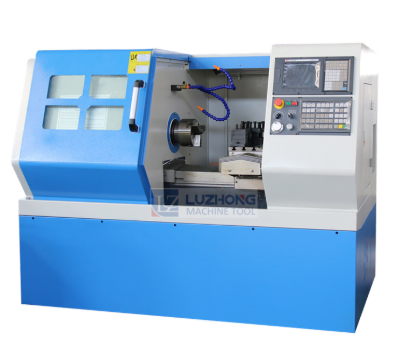Choice of direction of clamping force and operating point
(1) the clamping force of the CNC vertical Lathe machine shall be oriented towards the main positioning reference. The workpiece is required to be vertical between the boring and surface / 4. Therefore, surface A should be used as the main positioning base surface during machining, and the clamping force F should be oriented toward surface / 4. If the clamping force is changed to face B, the positioning position of the workpiece is damaged during clamping due to the Angle error between the side / 4 of the workpiece and the bottom surface B of the CNC lathe, which affects the requirement of the perpendicularity between the hole and the / 4 surface. CNC lathe plant
(2) the point of clamping force should fall within the supporting range of the positioning element and be close to the geometric center of the supporting element. The clamping force ACTS outside the supporting surface, causing the tilt and movement of the workpiece and damaging the positioning of the workpiece.

(3) the direction of the clamping force should be conducive to reducing the clamping force. When drilling hole A, clamp force luj and axial cutting force F. , the direction of workpiece gravity C is the same, the clamping force required in the processing process is the minimum.
(4) the direction and point of clamping force should be applied to the direction and position of CNC lathe parts with good rigidity. The axial rigidity of thin wall sleeve workpiece is better than radial attachment, and clamping force should be applied along the axial direction. When the thin-wall box body is clamped, it should act on the convex edge with good rigidity in CNC lathe factory. When the box body has no flange, single point clamping can be changed to three points clamping.
(5)CNC lathe machine china manufacturer shares that clamping force should be as close as possible to the workpiece processing surface. In order to improve the rigidity of the workpiece and prevent or reduce the vibration of the workpiece, the working point of the clamping force should be as close as possible to the machining surface. When the fork is clamped, the main clamping force F: it ACTS vertically on the main positioning base surface, and an auxiliary support is set near the machining surface. When the appropriate auxiliary clamping force is applied, the installation rigidity of the workpiece can be improved.
Copyright © Shandong Luzhong Machine Tool Co.,Ltd. All Rights Reserved